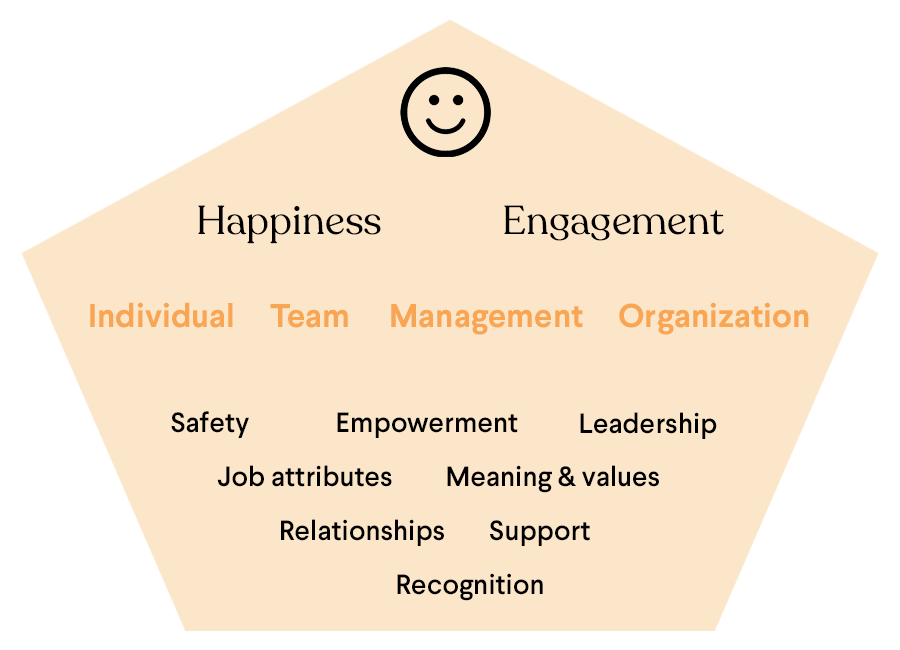What is employee engagement?
Employee engagement and happiness are closely linked. Happiness refers to a positive feeling. Engagement refers to the degree to which a person is committed on an emotional level to the company and one’s own responsibilities. Both reinforce each other. When a person feels involved, it positively impacts the feeling of happiness. Experiencing this sense of belonging is a universal need. And people who feel comfortable in their work, are less likely to experience straining pressure from work.
How to measure happiness & engagement?
Happiness is a specific emotion that everyone experiences differently. What contributes to one person feeling happy may be less relevant to someone else. So when an employee-satisfaction survey simply asks how happy someone feels, you get an answer that can cover a variety of aspects. Therefore, it is important to use a good measurement scale for both positive and negative feelings, as well as engagement.
Drivers of employee happiness & enagement
Much scientific research has been done on the “drivers” behind happiness and engagement. By analyzing these drivers in relation to current work happiness and engagement, you can determine what factors your organization needs to work on to increase employee work happiness and engagement.
People within your organization may need to work on different drivers on different levels. Some teams may need to work on “psychological safety,” while in another business unit “meaning-based leadership” or “empowerment” may need attention. The Happiness & Engagement Scan shows you exactly which drivers to work on for the different places in the organization.

Why employee engagement and happiness matter
Happiness has positive effects on various organizational outcomes. For example, an extensive study at the University of Oxford found that employees who feel happy while performing their tasks are 13% more productive.
Other studies have shown that organizational happiness and engagement are associated with, among other things:
- increased task persistence
- more creativity
- less absenteeism and staff turnover
- higher customer satisfaction
In short; plenty of reasons to work on work happiness and engagement!
Roadmap to Happiness & Engagement
Happiness & Engagement is important for organizations that want to increase performance and reduce absenteeism. But how do you work to increase job happiness and engagement within your organization?
In this roadmap, we explain:
- How the current level of happiness & engagement can be measured
- What proven drivers of work happiness and engagement are
- How to arrive at the right interventions to increase work happiness and engagement
Download the paper and find out how to get started and make existing development programs more effective.




